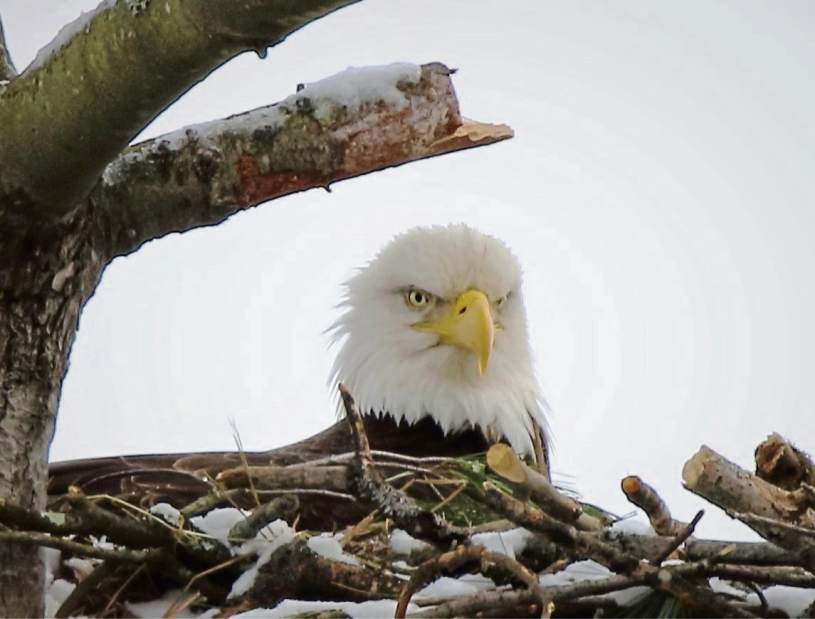Bob Frye: Eagles, raptors and lead issues
The problem is obvious. The solution is not.
But don't be surprised if hunters, in the long term, have to adapt.
Pennsylvania's bald eagle population is large and growing. In the early 1980s the state was home to just three nests. Now there are at least 250.
But there's trouble, too.
An increasing number of eagles are dying each year from lead poisoning.
The Game Commission has been testing dead and sick eagles since 2006. About one-third of those examined died of toxicity, with lead being the most common poison, said its wildlife veterinarian, Justin Brown.
Adult birds suffer more often than juveniles, and females more than males, Brown said. All regions of the state are seeing cases, though, with last year particularly bad.
Lead's impact on birds is bold.
Eagles with lead poisoning typically exhibit muscle loss, are often blind, have tremors and sometimes are discolored from sitting in their own unusually bright green feces.
“It's one of the more sad and painful things to look at,” Brown said.
It's not just eagles, either. All raptors are susceptible to lead poisoning, he said, because of their relatively powerful stomach acid.
Where the birds are picking up the lead is not entirely clear.
Lead ammunition and fishing tackle is identified as a problem by some, though.
California banned lead ammunition for hunting. A couple of other states are urging hunters to switch to non-lead bullets voluntarily.
Maine, meanwhile, made using lead fishing sinkers shorter than 2 1⁄2 inches illegal as of September.
Former U.S. Fish and Wildlife Service director Dan Ashe banned lead ammunition and fishing tackle on all federal lands the day before President Barack Obama left office. The Trump administration reversed that this spring.
Game Commissioners aren't proposing a lead ban.
It's true that lead ammunition likely remains in the environment after a hunter pulls the trigger, Brown said. Bullets fragment, especially if they hit something hard like bone, he said. Thirty to 40 percent of those fragments can be left behind after passing through an animal. Eagles and other scavengers can ingest it, he said.
Some of that surely is occurring. Brown said cases of sick eagles and other raptors peak in hunting season.
But that's not the only time sick birds show up. Commissioner Jim Daley said there were 11 eagles with lead poisoning this summer.
Unless they ate hunter-killed groundhogs, the lead had to come from somewhere else, he said.
Brown agreed. He said, too, that it's possible more lead-sick eagles are showing up just because there are more eagles out there and more people reporting them. But, he added, “we are starting to see what we think is an increasing number of cases over time.”
So look for lead to remain a hot topic.
In the meantime, the Game Commission is recommending hunters bury carcasses and gutpiles or cover them with branches to “make it less likely that aerial scavengers will find and consume the remains.” It also suggests hunters consider non-lead ammunition.
Bob Frye is the everybodyadventures.com editor. Reach him at 412-216-0193 or bfrye@535mediallc.com. See other stories, blogs, videos and more at everybodyadventures.com.
Article by Bob Frye,
Everybody Adventures,
 http://www.everybodyadventures.com
http://www.everybodyadventures.com
Copyright © 535media, LLC




